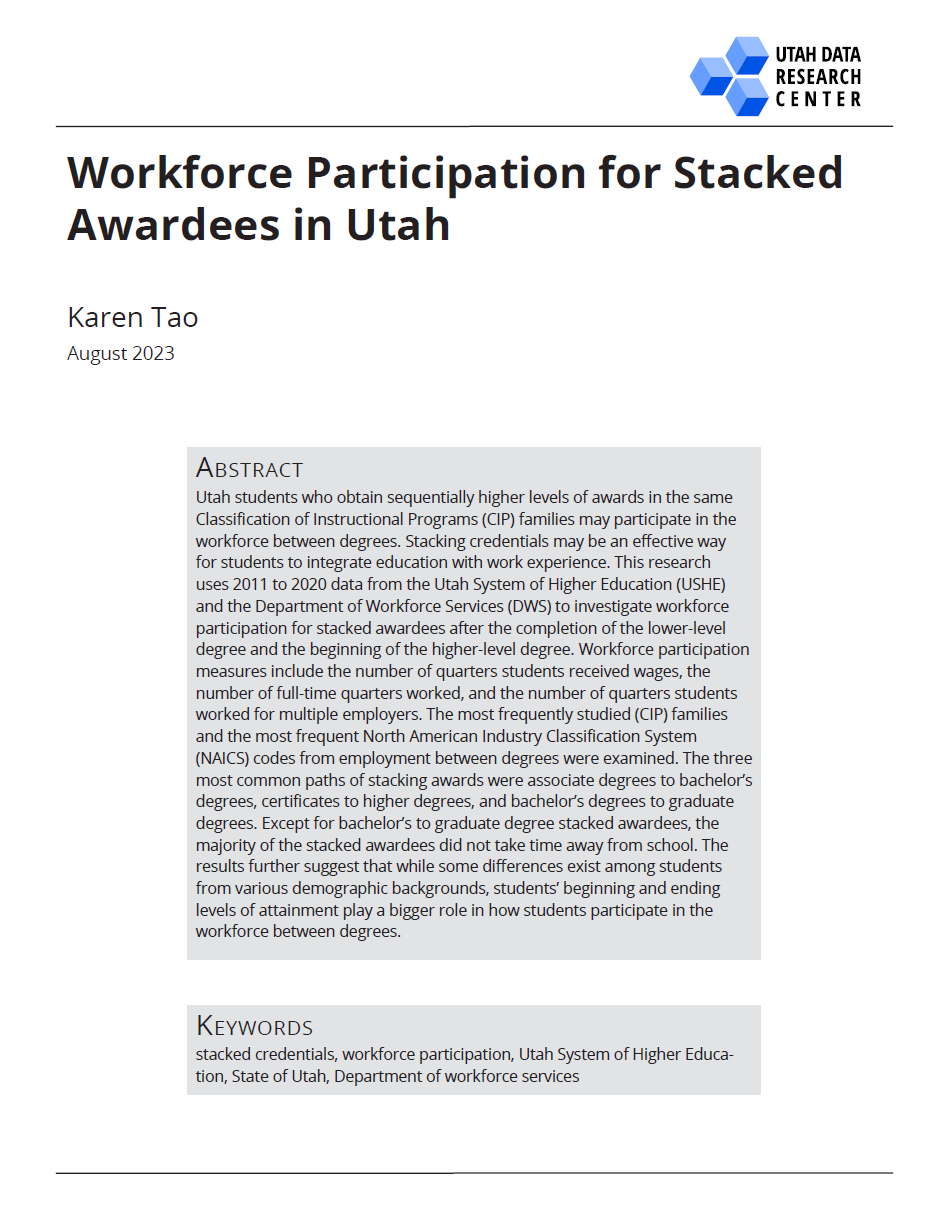Overview
Utah students who obtain sequentially higher levels of awards in the same Classification of Instructional Programs (CIP) families may participate in the workforce between degrees. Stacking credentials may be an effective way for students to integrate education with work experience. This research uses 2011 to 2020 data from the Utah System of Higher Education (USHE) and the Department of Workforce Services (DWS) to study workforce participation for stacked awardees after completing the lower-level award but before beginning the higher-level degree.
Stacking credentials allows students to obtain postsecondary awards in smaller chunks that could be building blocks on the path to obtaining higher educational attainment. Stacking credentials, such as certificates and degrees, can ease pathways to educational attainment by ensuring students’ access to multiple entries and exits through postsecondary education and the workforce. Furthermore, stackable credentials may be an attractive option for individuals to build upon their industry expertise and integrate education with work experience. Policymakers providing students with increased opportunities to earn credentials in higher education may focus on the impacts of stacked credentials. Stacked credentials may encourage adult students and historically underrepresented students to obtain lower-level awards that align with workforce needs and provide paths to obtaining higher educational attainment.
Workforce participation measures include the number of quarters students received wages, the number of full-time quarters worked, and the number of quarters students worked for multiple employers. The most frequently studied CIP families and the most frequent North American Industry Classification System (NAICS) codes from employment between degrees were examined. The three most common paths of stacking awards were associate degrees to bachelor’s degrees, certificates to higher degrees, and bachelor’s degrees to graduate degrees. Except for bachelor’s to graduate degree stacked awardees, the majority of the stacked awardees did not take time away from school. The results further suggest that while some differences exist among students from various demographic backgrounds, students’ beginning and ending levels of attainment play a bigger role in how students participate in the workforce between degrees.
Summary of Findings
Finding 1: The most popular stacked award path is an associate to bachelor’s degree.


